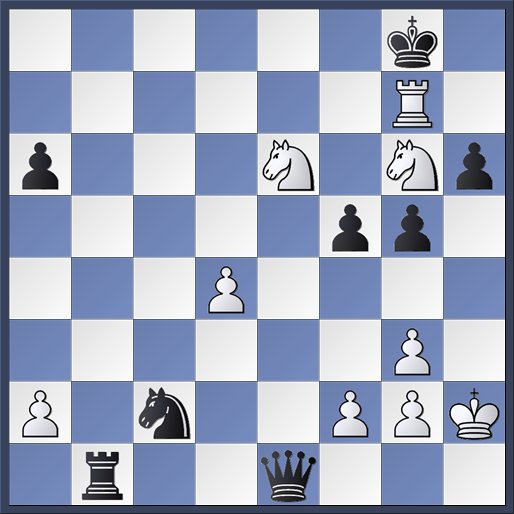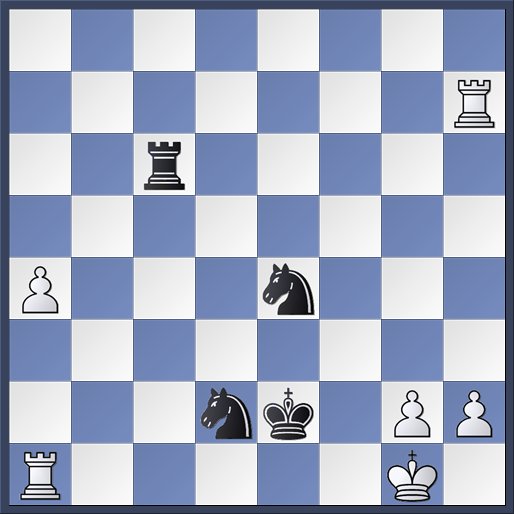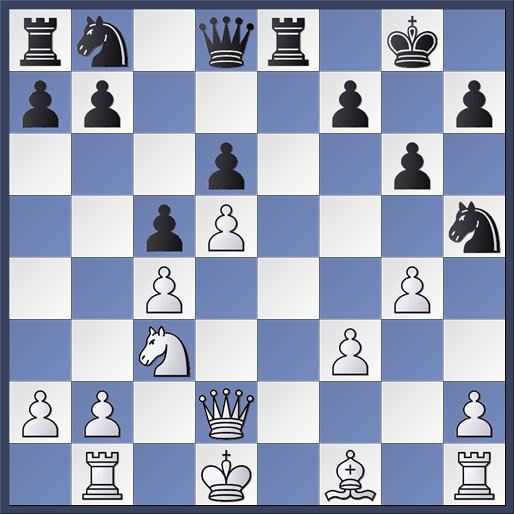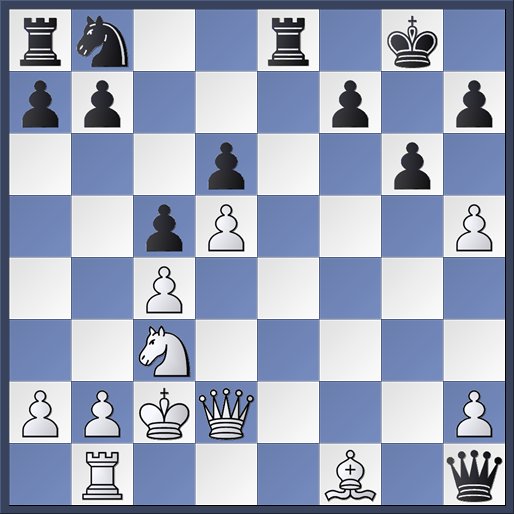It's time to stop sulking about the various headaches caused by the migration and get back to blogging. I managed to get the banner the overlords sent me to load properly, so that seems like some sort of victory at least. Alas, there doesn't seem to be much space between the base of the banner and the top of the first post. Does anyone know if there is a simple way for me to fix that?
Anyway, let's dip our toes into the water by getting updated on the big World Chess Championship. We last tuned in at the halfway point. Six games played out of twelve, six draws. Five boring draws.
But that all changed with game six! The opening was a Chebanenko Slav, aka the a6 Slav. Gelfand was white and got the obligatory small advantage out of the opening, and then Anand, well, he went a little bonkers. After some unwise pawn advances on the kingside, Anand found that his position was completely infested with white knights. Here's the final position, with black to move:

Anand resigned. He can make a queen with 1. ...e1Q, but white would then play 2. Ng6+ Kg8 3. Rg7 mate:

A pretty diagram. Those are the best knights I've seen in a world championship since Karpov, playing black, unloaded this little combination against Korchnoi: (Think of this as your tactical exercise for the day.)

Black played 1. ... Nf3+! and white resigned without waiting for the forced sequence 2. gxf3 Rg6+ 3. Kh1 Nf2 mate.
So Gelfand was the first to get on the scoreboard, but his lead didn't last long. In the very next game he went all out and played a risky line of the Saemisch Benoni. A gutsy choice, especially considering that he had a strong incentive to play cautiously. Alas, he got out-calculated in this position:

Gelfand played the losing move 1. ... Qf6? The official commentators thought black was doing rather well here, since the obvious 2. gxh5 runs into 2. ... Qxf3+ netting the white rook in the corner. So attention was paid to the exchange sac line 2. Kc2 Nf4 3. Ne4 Rxe4!, and since black's other knight will quickly come to e5 he would have excellent compensation for the exchange. But Anand made everyone look foolish by noticing a little trick.
He played 2. gxh5 Qxf3+ 3. Kc2 Qxh1

And now Anand uncorked 4. Qf2! Gelfand said after the game that he missed this shot. Suddenly black has no good way of extricating his queen from the corner. White will simply play Bd3 next and the black queen will be lost. The only way to continue playing would be with 4. ... Nc6, but after 5. dxc6 Qxc6 he will just be material down in a bad position. Gelfand resigned.
After this flurry of excitement things settled back down into boring draw mode. Anand abandoned the Slav for the Nimzo-Indian and had little trouble making draws. As white Anand tried the somewhat outre Rossolimo Sicilian, but he didn't get very far. Here's the final position of the final game, with Anand playing white:

White is up a pawn, but black has sufficient compensation. The game was agreed drawn on Anand's suggestion. Commentator Vladimir Kramnik was shocked that Anand would do that, arguing that he does have an extra pawn and that he could play on risk-free. The computer, however, agrees that the position is dead level.
So regulation play ends in a tie. In the past the rule has always been that if the match ends in a tie then the champion keeps his title. But not this time! Instead they will be playing a series of rapid games to determine the winner of the match. Very exciting. This will take place on Wednesday, so stay tuned!
- Log in to post comments
